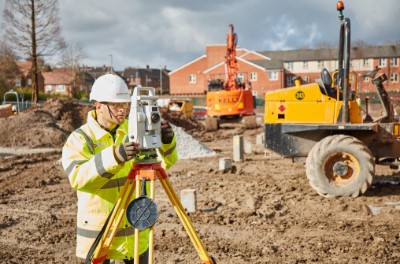
Anthony Ashurst spent 12 years in the Army before leaving as Acting Sergeant on the 1st February 2021. During his service, Anthony was a Class 1 Combat Engineer Section Commander, which meant he supervised all Combat Engineering tasks such as Explosive Demolitions, Explosive Method of Entry (EMO), Mine Warfare, Bridge Building, Watermanship, Water Supply, Route Denial and Field Fortifications.
Anthony’s last role in the Army was as an Engineering Surveyor Instructor at 1 Royal School of Military Engineering Regiment. He was the SNCO running an undermanned department independently, responsible for delivering all military Engineering Surveying modules to Class 2 (Level 3) trainees and Class 1 (Level 5) students. These lessons included draughtsmanship, setting-out, survey management/ planning, tunnelling and route reconnaissance. Outside of the classroom and back in the office his responsibilities involved looking after personnel individual welfare issues, daily administration, reporting department issues and functionality to CoC, and forecasting/ avoiding lesson clashes between courses.
Anthony’s skills gained during his service were maximised due to him having the responsibility of both JNCO/SNCO roles; such as time management and organisation as well as his technical expertise being both current and proficient. He was able to also grow as a coach and mentor, further developing his leadership qualities and inspiring the next generation of Combat Engineers and Engineering Surveyors. In addition to this, delivering presentations, lessons and department reporting were a daily occurrence, building on his confidence.
Anthony now works as a Senior Site Engineer at Tilbury Douglas Construction which he gained through his technical qualifications, researching his desired career path and setting goals that aligned with his ambitions. He also worked hard on his applications, thinking ‘outside the box’ (a key military skill!), networked, researched companies extensively and then contacted the company director on LinkedIn, which led to a phone call and finally employment.
Anthony’s desire to leave and succeed in civilian life acted as his main driver and meant an easy transition, along with the positive support from BuildForce and LinkedIn; however, work responsibilities conflicting with resettlement activities proved to be the main challenge. For this reason, Anthony would have liked to have seen further help and advice from subject experts in administration of transitioning service leavers as he felt there were few education and resettlement officers (IERO) who were often difficult to get hold of.
In Anthony’s new role, he has many responsibilities; below are a few key areas:
A typical day now for Anthony starts promptly at 0730 with emails followed by delivering inductions to any new sub-contractors on site. He then checks equipment and survey control, as well as any client drawing revision updates, interprets and communicates drawing updates and issues sub-contractors permits to work. Finally, Anthony sets out lines and levels for Plant Operators and Tradesmen, checks compliance, documents and reports site progress, all whilst promoting the H+S culture and finally closes sub-contractor permits to finish his working day at 1700.
The key skills gained during Anthony’s military service and of greatest value in his current role are: punctuality, time management, multi-tasking, presenting and paying attention to detail.
Anthony’s advice to someone leaving the Armed Forces and looking for a career in his own words:
Finally, Anthony describes a career in the construction industry as: “Challenging. Rewarding. Unpredictable.”